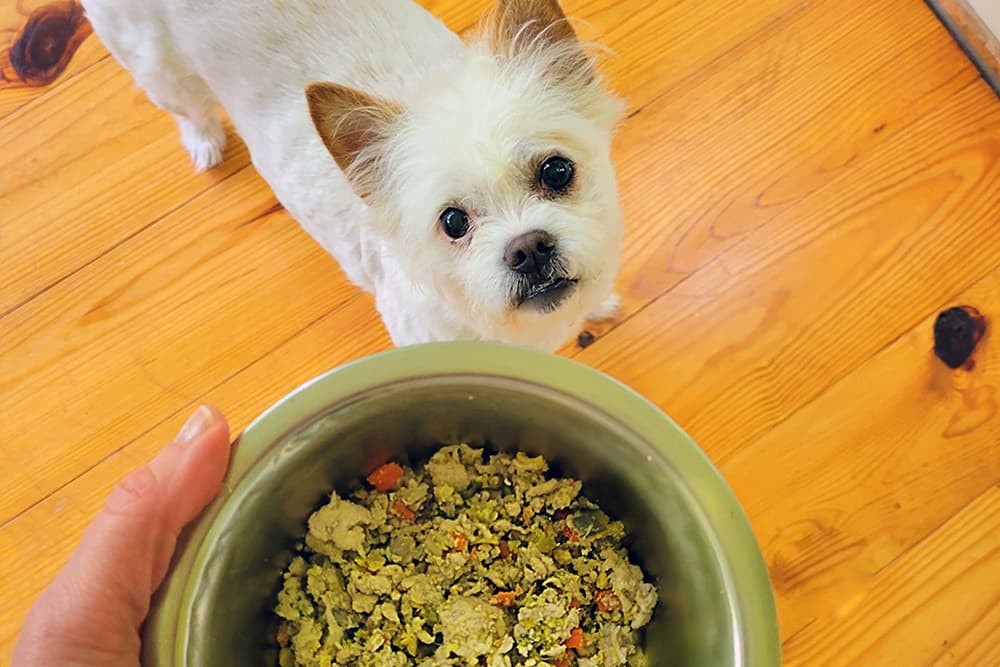How to Give Your Dog a Pill
Published on July 11, 2011
Skip To
Even the friendliest, most easygoing dog can put up a fight when it’s time to take a pill. But it’s your job to make sure she takes the medicine she needs. The good news: You can employ a few tricks—and offer some treats—to get the job done. Read on for a step-by-step guide.
If you want to give your dog the pill without hiding it in food, try the following technique, which many people find to be more reliable:
If you have a small dog, you can start by placing your dog in your lap. Put one arm—the one you will use to hold the head—over your pet’s shoulders, and use your upper arm and elbow to help keep her still, without using excessive force.
If your dog won’t stay in your lap, or is too big, you can use the same method while seated on the floor, either holding the front of your dog’s body partially against your body or on your lap. If you have a large dog, you can stand behind her and have her sit back against your legs. Sometimes it helps to back your dog into a corner.
If your dog struggles, talk to her calmly and stop what you’re doing if she becomes extremely agitated. Contact your veterinarian if you have questions or difficulty administering any medication.
This article has been reviewed by a Veterinarian.
The Basics
If you know your dog doesn’t like swallowing pills, you can ask your veterinarian if the medicine comes in a chewable “treat” form or if it can be compounded, or changed into a liquid to make it easier to administer. But these options aren’t always available. If the medication must be given in pill or capsule form, you may need to experiment with different methods before finding one that works for you and your pet.Follow Recommendations
When your veterinarian prescribes a medication, it’s important that you use only that medication, and that you treat your dog for the full length of time prescribed, even if your pet seems to have overcome the health problem. If you have any questions about how to administer the medicine, you can ask your veterinarian to demonstrate how to do it.Specific Techniques
The easiest way to get your dog to take a pill or capsule is to hide it in a treat or in her food. But dogs are smart, and if they don’t like the taste or texture of the medicine, many will eat the treat or food and leave the pill behind. Another problem with this method: If you hide the pill in food, it may be hard to tell whether your dog has taken the pill on time—or at all—if she grazes throughout the day. To work around this, you can buy dog treats designed to hide pills. But before you give your dog medicine with her food, ask your veterinarian if it’s OK, since some medicines can’t be given with treats or food. You should also find out if there are any restrictions on what your dog can eat while taking the medicine.If you want to give your dog the pill without hiding it in food, try the following technique, which many people find to be more reliable:
- For a small dog, put one hand on top of your dog’s head, holding firmly—but not too tightly—so that the tips of your thumb and middle finger touch the corners of the mouth. For a large dog, put your hand on top of your dog’s nose and hold the upper jaw.
- Tilt the head back.
- Hold the pill between the first finger and thumb of your other hand. Use the tips of the other fingers of this hand to push down on your dog’s lower jaw to open her mouth. Be careful to place your finger on the short teeth at the very front of the mouth, not on the longer (canine) teeth at the corners.
- If you have a large dog, you may be able to fold the upper lip over her teeth as you open the mouth, a trick that may keep your dog from closing her mouth.
- Drop or quickly place the pill as far back in your dog’s throat as you can. Don’t push the pill down.
- Hold your dog’s mouth closed and stroke her throat or blow on her nose to encourage swallowing.
- Give your dog a reward, like a veterinarian-approved treat, for being a good patient.
- When using this technique, be aware of your dog’s mood. If she gets agitated and seems likely to bite, stop and try again later or contact your veterinarian.
Restraining Your Dog
It’s often a good idea to have another person keep your dog still while you administer the medicine. But you can do it alone if there’s no one to assist you.If you have a small dog, you can start by placing your dog in your lap. Put one arm—the one you will use to hold the head—over your pet’s shoulders, and use your upper arm and elbow to help keep her still, without using excessive force.
If your dog won’t stay in your lap, or is too big, you can use the same method while seated on the floor, either holding the front of your dog’s body partially against your body or on your lap. If you have a large dog, you can stand behind her and have her sit back against your legs. Sometimes it helps to back your dog into a corner.
If your dog struggles, talk to her calmly and stop what you’re doing if she becomes extremely agitated. Contact your veterinarian if you have questions or difficulty administering any medication.
This article has been reviewed by a Veterinarian.





